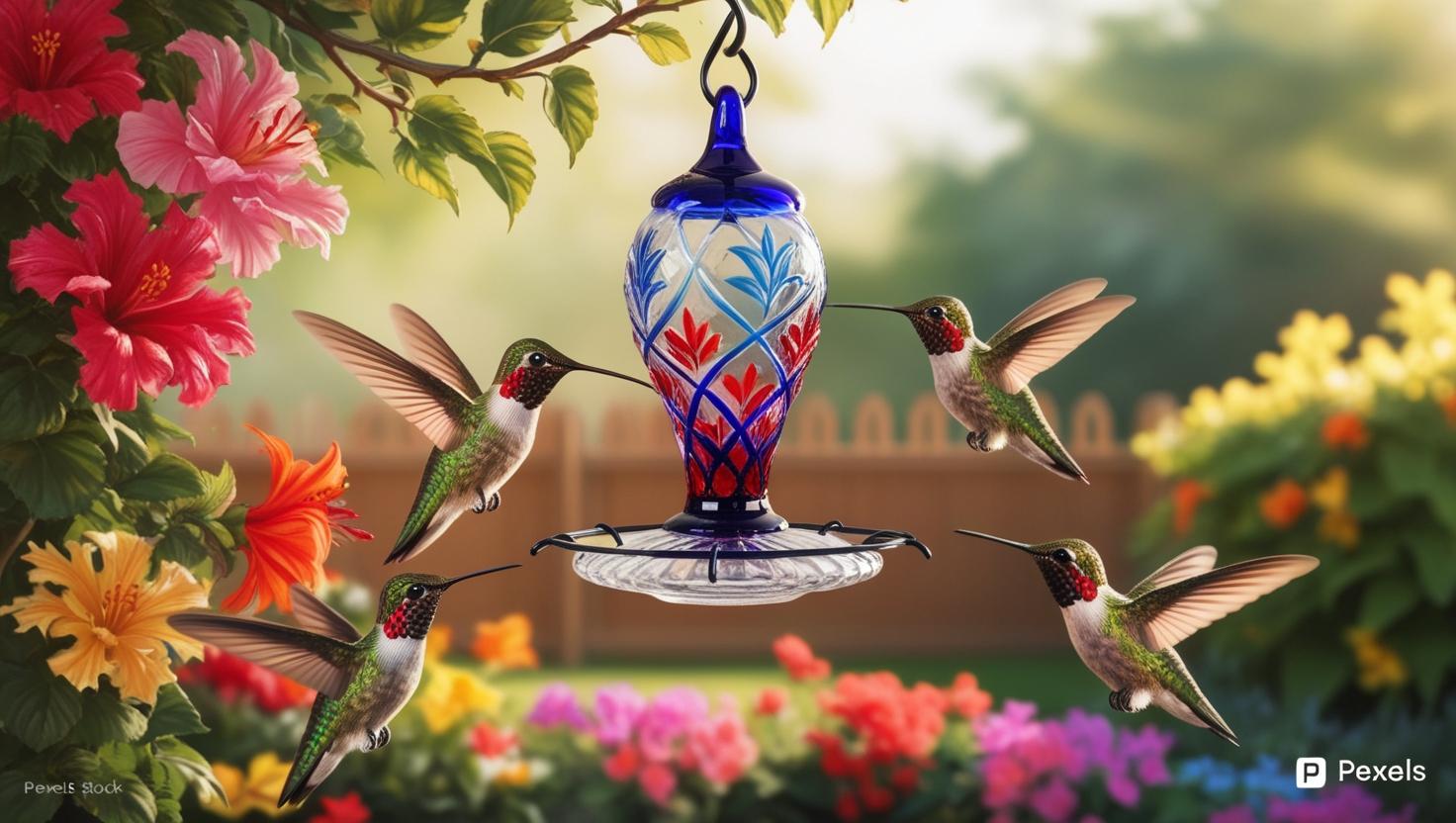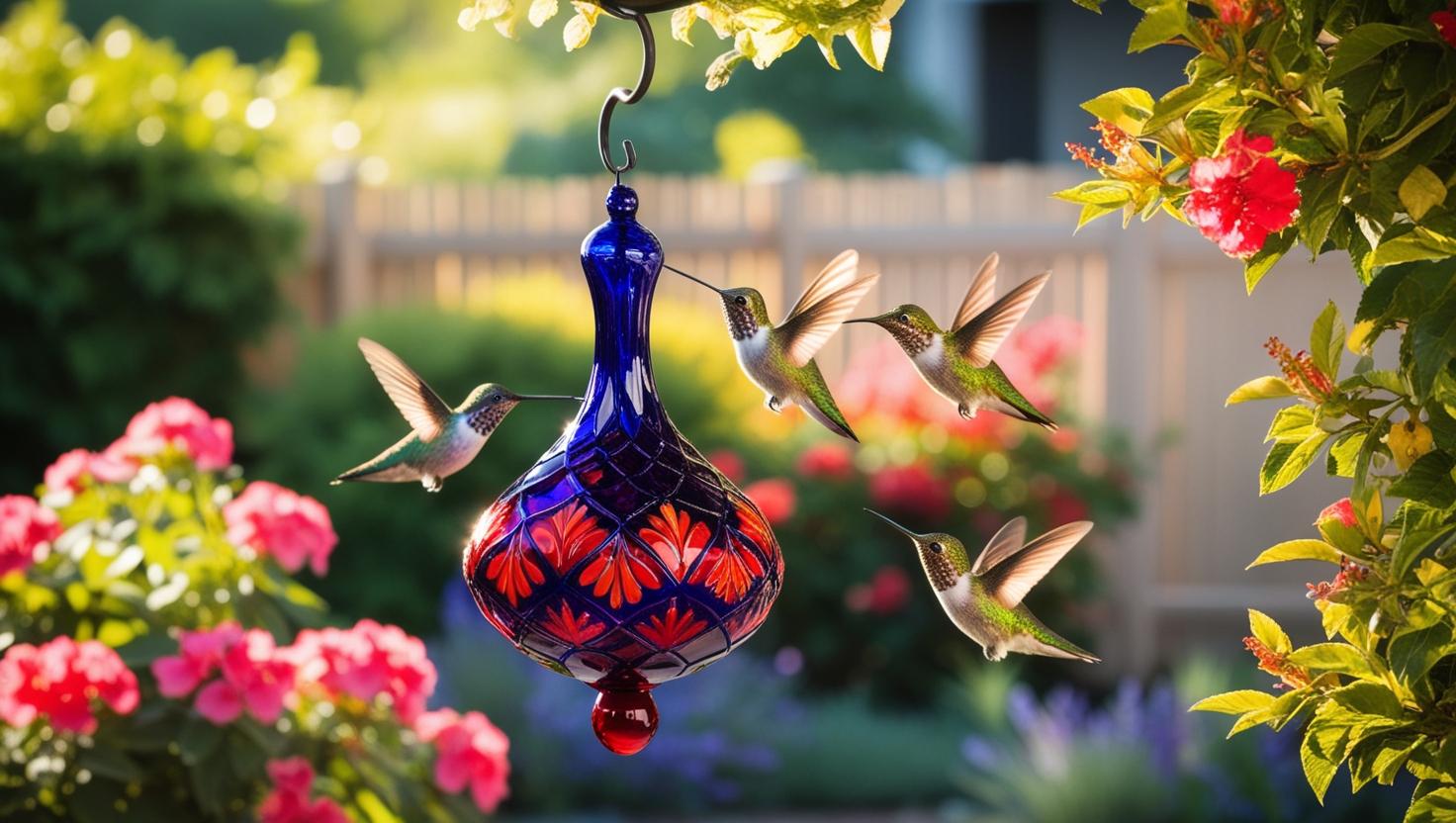Hummingbirds are pretty astonishing creatures, showing off some of nature’s most incredible energy feats. Their tiny frames demand a heck of a lot of energy just to get off the ground and stay there. This means they’re eating like, all the time. These birds run on high-octane nectar to fuel their crazy-fast wingbeats and on-the-go lifestyle.
Think about it: their hearts can race at over 1,200 beats per minute. That’s mind-blowing! This is because they need a fuel source that can keep up with their high speed, high endurance flight. The secret lies in their insane metabolic rate, which is among the highest in the animal kingdom. This high metabolism is what drives these little guys to seek out rich sources of energy so often.
Enter nectar. It’s mainly sugar and water, just the ticket for fueling hummingbirds’ hyperactive lives. This sweet drink gives hummingbirds the quick energy burst they need to fly from one flower to the next and back again, all day long. They’re like tiny helicopters, needing frequent refueling. Understanding how they use nectar helps us appreciate the intricate dance between these birds and their flowering partners. It’s a relationship that highlights the fine-tuned adaptation of these creatures to their ecosystems.
Observing this natural wonder, we can encourage the thriving of hummingbirds in our backyards by ensuring a supply of suitable nectar sources. By planting native flora or maintaining clean and safe feeders, we support their tireless energy consumption, aiding them in their incredible day-to-day flights.
Unlocking the Secrets of Hummingbird Nutrition
Hummingbirds are picky about their nectar, and with good reason. The main ingredients they’re hunting for are sugar, water, and a few extra nutrients. When you break it down, nectar is basically sugary water. For a hummingbird, that’s as glorious as a full buffet.
Not all nectar is created equal. The sugar concentration in nectar plays a big role in its appeal. Most hummingbirds have a keen eye for that ideal sugar-to-water blend. Too much water and it’s like drinking unsweetened tea; too much sugar and it’s like eating candy for dinner. They’ve evolved to prefer nectar with about 20-25% sugar concentration. Finding that perfect mix gives them the energy punch they need to keep zipping around.
There’s a special touch that wildflowers add to the mix that feeders sometimes miss—they bring trace nutrients and diversity. This diversity in their diet helps hummingbirds balance their energy needs with other nutritional requirements. By planting indigenous flowers, you’re pretty much opening a gourmet restaurant in your backyard for them.
If feeders are a must, aim to mimic nature’s offering. Mix your own nectar using four parts water to one part sugar. Skip the honey, dye, or any substitutes—even though they might seem like fun additives, they can mess with a hummingbird’s health. Keeping the nectar fresh and clean is crucial to ensure it’s not just a convenience, but a healthy option for these energetic birds.
The Impact of Artificial Feeding
Artificial feeders can be a lifeline for hummingbirds, especially during lean times when natural food sources are scarce. These feeders offer a quick fix, providing the sugary energy that keeps these little dynamos buzzing.
While feeders have their benefits, it’s important to be aware of some pitfalls. One major risk is the overreliance on sugary solutions, which can lack the balanced nutrition found in natural sources. Over time, this can impact their health just like humans eating junk food.
Another issue is maintaining cleanliness. Dirty feeders can become breeding grounds for mold or harmful bacteria, posing a threat to hummingbirds. It’s crucial to clean feeders thoroughly and regularly to keep the nectar safe and healthy.
Choosing the right nectar is pretty straightforward: stick to simple sugar water without any added colors or flavors. Commercial nectars can often have unnecessary additives. Mixing your own nectar using plain white sugar and water ensures a safe and nourishing choice.
When done right, artificial feeding offers a great way to support hummingbirds through difficult seasons or in areas where natural nectar might be lacking. It’s all about balance and being a responsible caretaker.
Creating a Hummingbird Haven
To truly welcome hummingbirds, setting up a diverse floral landscape is key. Think of it as a buffet that offers a little something for all taste buds. Planting a mix of native flowering plants ensures there’s always something blooming throughout the year, providing a reliable nectar source.
Going beyond just flowers, creating a safe habitat is equally important. Avoid using pesticides, as they can deter these delicate birds and harm their food sources. Providing clean water sources enhances the appeal of your garden, offering a spot for them to sip and spray between nectar hunts.
Maintaining peace and quiet in your hummingbird haven makes it all the more inviting. Keep disturbances minimal and let them flutter freely in their space. This approach helps create a sanctuary where hummingbirds feel safe and welcome.
Participating in conservation efforts benefits hummingbirds. Supporting organizations that aim to protect their natural habitats and breeding grounds means you’re contributing to their continued survival. This connection between home gardens and broader conservation goals hooks directly into the shared mission of protecting these amazing birds.
Hummingbird Feeding: A Balancing Act
Observing these tiny creatures is essential to understanding their needs. Watching their behavior and health offers clues to whether your feeding efforts are hitting the mark. Are they visiting your feeders more than the flowers? Maybe it’s time to tweak the balance between natural and artificial sources.
Finding that sweet spot where artificial feeding supports, but doesn’t take over their natural foraging instincts, is key. Think of feeders as a backup plan, rather than the main course. Always aim to encourage their innate foraging habits by maintaining a variety of blooming plants.
Appreciating hummingbirds goes beyond just feeding them. It’s about enjoying their aerobatic displays and the simple beauty they bring to our surroundings. Celebrating their adaptability and marveling at their resilience adds a deeper level of connection to these wondrous birds.
The Science of Nectar Foraging
Hummingbirds are master foragers, using a combination of memory and visual cues to locate nectar sources. They remember which flowers are most rewarding and often follow a set route, visiting the same spots to ensure consistent access.
Nectar availability isn’t just about what’s in bloom; it also involves competition. Hummingbirds are often in a tight race with each other and other nectar-loving creatures. Observing their territorial behavior gives insight into how they manage these competitions to secure their meal tickets.
Their adaptations for efficient feeding are jaw-dropping. Those rapidly beating wings and specialized long bills are perfectly designed for quick nectar extraction. Even their tongues, tipped with specialized grooves, are adapted to lap up nectar at high speeds, ensuring they get what they need quickly and move on.
These feeding behaviors showcase not only the hummingbirds’ adaptability but also their role in pollination. By crisscrossing various plants, they’re crucial players in the cycle of life, ensuring the propagation of the flowers that sustain them.
Seasonal Considerations in Hummingbird Feeding
Migration is another marvel of the hummingbird world. These feathery jet-setters embark on long-distance travel journeys that would tire out many bigger birds. As they make their seasonal moves, their feeding needs shift dramatically. Ensuring an abundant supply of nectar during these times can be life-saving.
Temperature changes affect how hummingbirds feed. Colder spells increase their caloric needs, pushing them to consume more nectar to stay warm. In warmer weather, their access to a variety of flowers might increase, allowing for more diverse nutrition.
These birds adapt to the ticking seasonal clock, whether by changing their feeding spots or altering their diets a bit. Observing what blooms each season and how hummingbirds adjust gives valuable insight into helping them thrive year-round.
By aligning garden planting schedules with these natural cycles, enthusiasts can support hummingbirds’ nutritional needs during migration, breeding seasons, and harsh weather conditions. Being mindful of these seasonal shifts ensures a supportive environment all year.
Enriching Hummingbird Experiences for Enthusiasts
Getting involved in citizen science programs is a rewarding way to dive into the world of hummingbirds. These initiatives allow enthusiasts to contribute to vital hummingbird research simply by observing and recording the behaviors of these captivating creatures in their backyards.
Spreading awareness about the importance of healthy habitats can amplify the impact. Educating neighbors and community members about avoiding pesticides and planting native flowers can lead to a wider habitat network for hummingbirds.
Capturing the beauty of hummingbirds through photography not only preserves their remarkable features but also tells the story of their incredible life cycles. Sharing these moments helps foster a greater appreciation and inspires others to take an interest in these tiny avian marvels.
Building this connection deepens our understanding and empathy for the natural world, bridging a human-nature relationship that sustains biodiversity. It’s about more than just watching these tiny wonders—it’s about engaging with their world and ensuring its continuity for generations.


